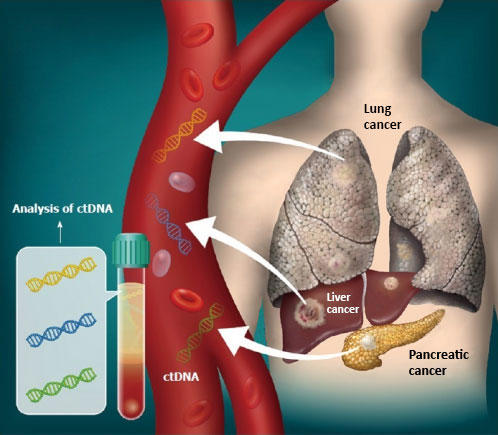Triple-negative breast cancer (TNBC) is an aggressive breast cancer. It spreads quickly and has few treatment options. It is also serious because of its rate of recurrence.
Black women are twice as likely as white women to be diagnosed with TNBC. They are also more likely to die from the devastating disease. In fact, the five-year survival rate for TNBC in Black women is only 14% compared to 36% in women from other racial backgrounds.
Multiple biological and socioeconomic factors are blamed for this higher risk. UC Davis Comprehensive Cancer Center researcher Sanchita Bhatnagar and her team have been working to get to the bottom of the genetic determinants of the racial disparity in TNBC. Results from their research were recently published in EMBO Reports.
Unraveling the mystery
The Bhatnagar Laboratory has been studying a protein called TRIM37 for over 10 years after Bhatnagar discovered its role as a breast cancer-causing gene.
A decade ago, Bhatnagar discovered the role of TRIM37 gene in causing breast cancer. Since then, her lab has studied the protein encoded by that gene. The protein, called TRIM37 in reference to the gene, is present in high numbers in breast cancer tissues. It is associated with poor patient survival.
TRIM37 is a driver of TNBC spread and resistance to chemotherapy. Bhatnagar and her research team have persevered in studying TRIM37 to find out why it may hold the key to Black women getting and dying of TNBC at high rates.
The study's findings could help develop TRIM37 as a predictive biomarker, which eventually could improve TNBC diagnosis and prognosis in Black women.

The hunt for the biomarker
Bhatnagar, who is an associate professor with the UC Davis Department of Medical Microbiology and Immunology, said the missing link appears to be a predictive biomarker. It may help identify patients at risk of aggressive TNBC.
"We discovered that the TRIM37 variant known as rs57141087 is predominant in Black women and modulates TRIM37 levels through enhancer-promoter interactions," Bhatnagar said. "Specifically, TRIM37 overexpression in early stages of triple-negative breast cancer promotes neoplastic transformations (formation of tumor), accelerates tumorigenesis (tumor growth) and drives cells into malignancy (spread of cancer)."
Essentially, if a patient has tumors with high levels of TRIM37 protein, it indicates poor prognosis and overall survival and an increased likelihood of metastasis. Increased early-stage TRIM37 levels appear to give cancer cells a "head start," impacting the disease trajectory and outcomes.
In this latest research, Bhatnagar's lab showed that the cancer-free breast tissue from Black women expresses a relatively high level of this protein, which predisposes them to aggressive disease. The rs57141087 variant might be the reason why.
Methodology
The research team used comprehensive genomic and functional analysis to uncover the genetic drivers that predispose Black women to aggressive TNBC. The analysis identified the ancestry-specific, genomic feature at a single base position in DNA called rs57141087.
Information from a total of 319 patients was included. Interestingly, the meta-analysis revealed ~1.63-fold higher TRIM37 expression in early histological Stage I TNBC tumors from Black women than in white women, which was not the case for Stage II–IV.
The team's analysis confirmed the association between TRIM37 expression in the Stage I TNBC tumors with racial identity. Next, the researchers assessed to what extent the early-stage differences in TRIM37 expression could explain the disparity in the overall survival of TNBC patients.

The findings showed Black women with TNBC tumors expressing high TRIM37 showed poor overall survival, with a median survival of ~114 months (9.5 years) as compared to white women, with a median survival of ~245 months (20.4 years). Notably, no significant differences in overall survival were observed for low TRIM37-expressing TNBC tumors from Black women and white women.
The team has previously engineered a novel TRIM37 targeting approach. They used TRIM37-specific, synthetic RNA-based inhibitor delivered in vivo by small vesicles, called nanoparticles.
A patent for targeting TRIM37 using nanoparticle delivery mechanisms is pending.
"Our work provided pre-clinical proof-of-concept regarding TRIM37, a clinically relevant target for TNBC treatment," Bhatnagar said. "Our hope is that further research can be done to test TRIM37 as a therapeutic target for slowing down TNBC and develop TRIM37 as a predictive biomarker for TNBC in Black women."
Other authors:
Along with Bhatnagar, other UC Davis Comprehensive Cancer Center contributors include Laura Fejerman, Jogender Tushir-Singh, Xiaoson Huang, Hong Li and Jie Li. The lead authors include Rachisan Djiake Tihagam, a graduate student, and Song Lou, a project scientist in the Bhatnagar Lab. Piotr Przanowski, who was a member of the Bhatnagar Lab when it was located at the University of Virginia, also contributed to the research.
This project also provided research opportunities to UC Davis undergraduate students Kammi Song-Yan Liu and Bon II Koo. Arjun Tushir Singh, a senior at Davis High School, was also involved with the study as part of a high school science program hosted by the UC Davis Department of Medical Microbiology and Immunology.






